



NOTE FROM CHAS!:
If you are interested in saving yourself a LOT OF TIME,
Click HERE and "skip" to the list of FLAWS found within this article's study!
THEN decide whether you want to bother reading it. The list of FLAWS is posted ON THIS WEB PAGE, following the article's SEVEN scanned pages. So, if you prefer, you can also read about the FLAWS after you've read the article.But - whatever you do - PLZ do NOT waste paper to PRINT these article pages out until AFTER you've read about the FLAWS! Additionally, at the end of this page, I've provided a link to the National Criminal Justice Reference Service's ADOBE ACROBAT file of this article. If you really MUST have a printed copy of it, print this article from its clear and crisp ADOBE ACROBAT file. THEN, be sure to print the last section of THIS WEB PAGE, so you also have a copy of the FLAWS found within this article!


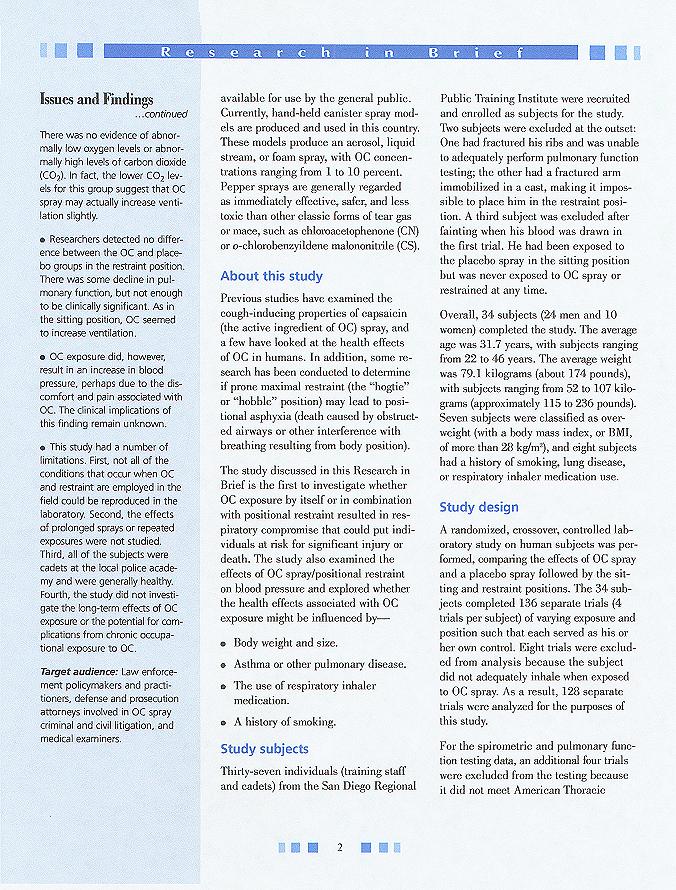
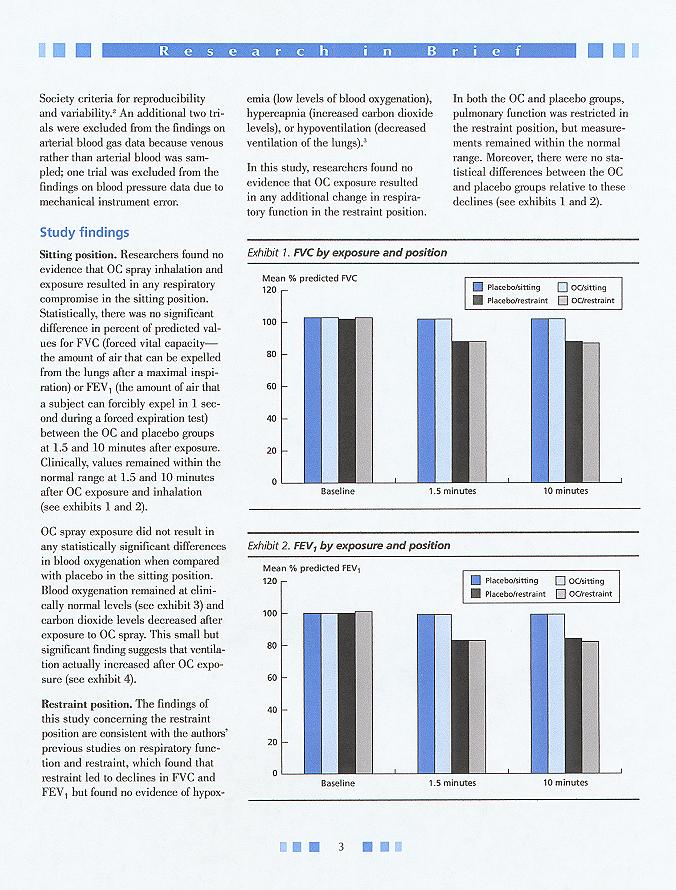
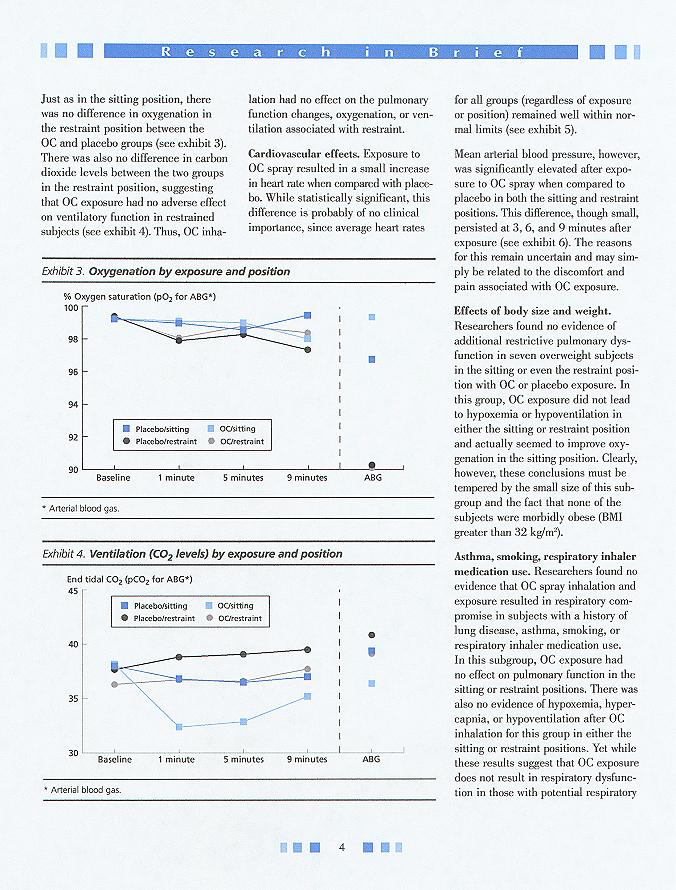
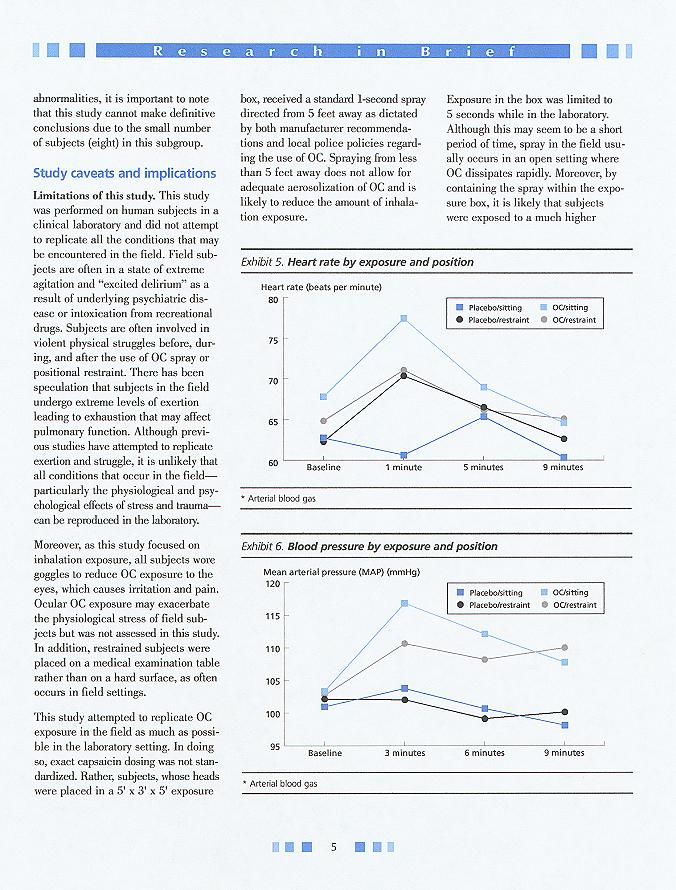

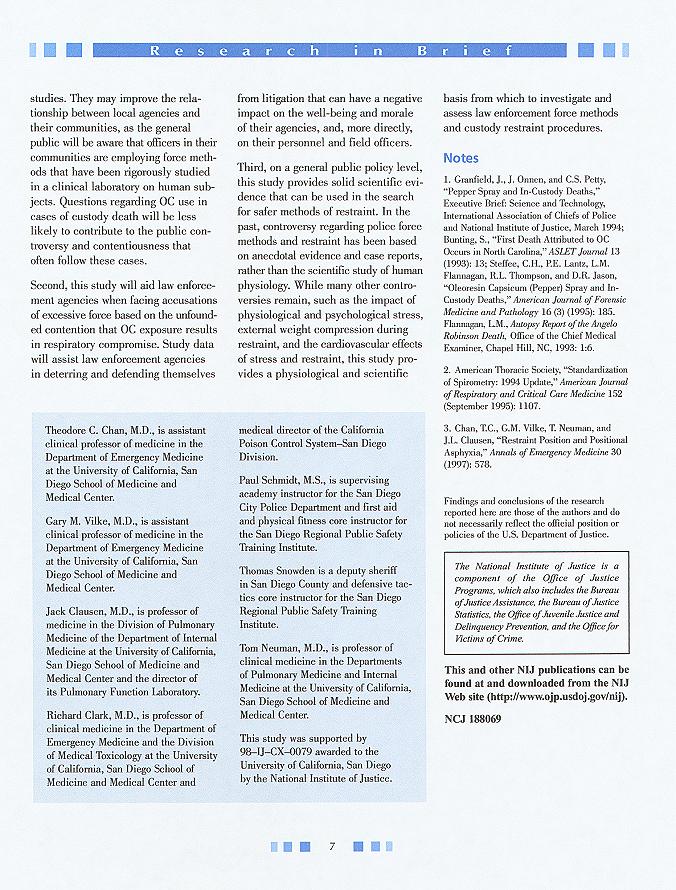
GADZ. Once AGAIN, Chan et al. have wasted a ton of time
Below are some QUOTES from the above article.
* Chan et al.'s THIRD limitation point is the most important one. Besides being offered in the wrong order of importance, their THIRD limitation point is significantly "understated!" Have any of you ever undergone the incredibly rigorous physical testing required simply to be accepted into a Police Academy? Or, undergone the exceptionally rigorous physical training that occurs during Police Academy training? If so, you KNOW that describing Police Academy Cadets as being, "generally healthy," is a criminal understatement! Police Academy Cadets are among the most healthy individuals on the planet. How many incredibly healthy individuals require the use of pepper spray? Forceful-prone-restraint? Hobble restraint? NONE ... that's how many. This study's findings are ONLY applicable to incredibly healthy individuals, who DO NOT REQUIRE interventions for acting violently!
As to Chan et al.'s FIRST-listed limitation point: WHAT "conditions" couldn't they reproduce in the laboratory? REAL LIFE CONDITIONS ... that's what! Individuals with an altered level of consciousness due to some sort of "unhealthy" event (alcohol or drug intoxication, head injury, diabetic hypoglycemia, seizure disorders, and the like) were not studied. Additionally, unhealthy individuals who had engaged in extremely strenuous activity prior to being pepper sprayed and placed in restraint were not studied. Thus, this study's findings CANNOT be considered applicable to REAL LIFE situations involving people who require the use of pepper spray or restraint.
As to Chan et al.'s SECOND and FOURTH limitation points: They've already wasted time and money testing healthy individuals for things they will likely never be subjected to - proven the safety of interventions upon people who will never require them. I dearly hope that Chan et al. do not pursue even more worthless research, by investigating whether these points would adversely effect healthy individuals.
* The reference used by Chan et al. to support the above statement (and one of the primary claims of this study) does NOT provide support for same.
[If you haven't already read this stuff, go back to my Restraint Asphyxia Library and read the articles and papers written by myself and Forensic Pathologists about Chan et al.'s November 1997 Annals of Emergency Medicine article! (You can read THAT article as well! It's in my library.) Their "previous" study does NOT apply to US. And, it is does NOT support this study's premise!]
Chan et al. have NEVER studied "hobble restraint" or forceful-prone-restraint. Additionally, like this study, the non-hobble-restraint study that they "previously" performed (the one they are referencing to support the above-quoted-statement) used ONLY healthy individuals who had exercised on a stationary bike for a mere four minutes. How many healthy people, who have just exercised for four minutes on a stationary bike, require the use of pepper spray or any kind of restraint? NONE ... that's how many! Thus, this study's findings CANNOT be considered applicable to REAL LIFE situations involving people who actually require the use of pepper spray or restraint.
I could continue nitpicking at this study (there is PLENTY more to find fault with). But, I'm tired ... and, the above points - all by themselves - substantially demonstrate the WORTHLESSNESS of this study.
Chan et al. have "proven" that you can spray incredibly healthy, relatively rested people, AND put them in a little bit of restraint, without worrying about killing them! So. If you're "into" that, go ahead!
But, for your own safety, PLZ KNOW THIS: Chan et al.'s research continues to provide NO SUPPORT (no "excuse") for anyone who continues using pepper spray and forceful-prone-restraint (or hobble restraint) - separately OR together.
To download the Adobe Acrobat file of this NCJRS article (and print a clearer copy of it, if you really must have one!), CLICK HERE.

(and an awful lot of SOMEONE'S MONEY) to perform a study that
DOES NOT HELP EMERGENCY RESPONDERS (US!),
WHATSOEVER!
The quotes are indented, printed in bold text, and surrounded by red quotation marks (" ").
My comments follow each quote, and are preceded by a blue asterisk (*)."This study had a number of limitations. [My bullets!]

"Restraint position. The findings of this study concerning the restraint position are consistent with the authors' previous studies on respiratory function and restraint, which found that restraint led to declines in FVC and FEV1 but found no evidence of hypoxemia (low levels of blood oxygenation), hypercapnia (increased carbon dioxide levels), or hypoventilation (decreased ventilation of the lungs).[3] "


Alternatively, you can order a print copy from NCJRS by calling,
800-851-3420 (877-712-9279 for TTY users).
To Return To Wherever You Came From
OR:
 Email Charly at: c-d-miller@neb.rr.com
Email Charly at: c-d-miller@neb.rr.com
Those are hyphens/dashes between the "c" and "d" and "miller"
(when my site moved to new Web Server)